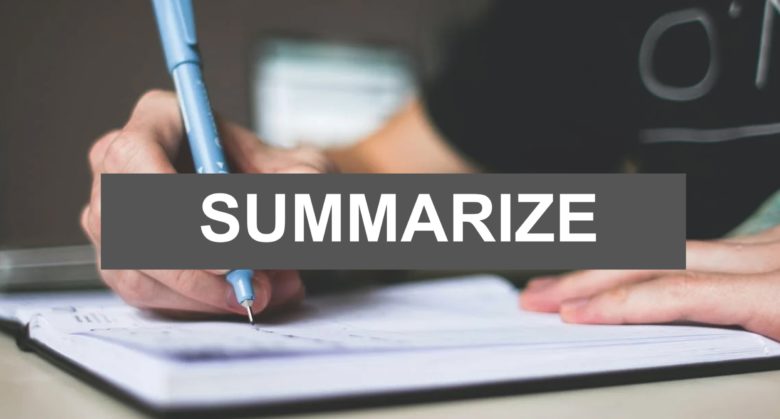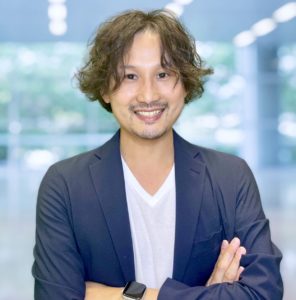
Hey guys. 代表Okadaです。

TOEIC IIBC AWARD OF EXCELLENCE受賞、英検1級、TOEIC満点のトライリンガルが大学受験の要約問題を出題する大学や最近のトレンドをご紹介します。
大学受験英語で要約問題を出題する大学は多いですが、最近大きなトレンドがあります。流行の傾向がはっきりしているので、今後出題を新規に始める大学もあるかもしれません。要約問題を出題する大学のリストと合わせて確認していきましょう。
要約問題の大きなトレンド【全体要約ではなくパラグラフ要約】
広島大を例にとってみましょう。
2021年広島大
各パラグラフを30字以内で要約するという問題です(本文に本来ある脚注は省略しています)
[ 1 ] Read the following passage and grasp the main idea. With this in mind, summarize each paragraph within 30 characters in Japanese including punctuation marks.
The world of education is currently undergoing a massive transformation as a result of the digital revolution. This transformation is similar to the transition from apprenticeship to universal schooling that occurred in the 19th century as a result of the industrial revolution. In the apprenticeship era, most of what people learned occurred outside of school. Universal schooling led people to identify learning with school, but now the identification of the two is unraveling.
All around us people are learning with the aid of new technologies: children are playing complex video games, workers are interacting with simulations that put them in challenging situations, students are taking courses at online high schools and colleges, and adults are consulting Wikipedia. New technologies create learning opportunities that challenge traditional schools and colleges. These new learning niches enable people of all ages to pursue learning on their own terms. People around the world are taking their education out of school into homes, libraries, Internet cafes, and workplaces, where they can decide what they want to learn, when they want to learn, and how they want to learn.
Who will benefit ultimately from this revolution? In America there is a commercial push to sell educational products to consumers who are looking for an edge up in the race for success. This means that technological products and services are popping up all over the American landscape. Education, once viewed as a public good with equal access for all, is now up for sale to those who can afford specialized services and computer programs.
We think schools have served America and the world very well. We greatly admire the teachers who have dedicated themselves to helping children from different backgrounds to learn and thrive in a changing world. Schools have made invaluable contributions to the world’s development and we think they will continue to do so well into the future. However, we think it is time that educators and policy makers start to rethink education apart from schooling. Education is a lifelong enterprise, while schooling for most encompasses only ages five to 18 or 21. Even when students are in school, much of their education happens outside of school. We all know that technology has transformed our larger society. It has become central to people’s reading, writing, calculating, and thinking, which are the major concerns of schooling. And yet technology has been kept in the periphery of schools, used for the most part only in specialized course
The central challenge is whether our current schools will be able to adapt and incorporate the new power of technology-driven learning for the next generation of public schooling. If schools cannot successfully integrate new technologies into what it means to be a school, then the long identification of schooling with education, developed over the past 150 years, will dissolve into a world where wealthier students pursue their learning outside of the public school.
(Adapted from Rethinking Education in the Age of Technology by Allan Collins and Richard Halverson, 2009)

このようにわずか30字で要約していく形式なんです。2022年ではこれが100字ごとでの要約に変わりました。このようにパラグラフを指定した要約は主要大では2021年九州大で出題。私立大では2022年の西南学院大では、各パラグラフの要約文が選択肢になっている問題が出題されています。
一方で2020年までは200字以上の全体の要約が求められました。例えば、2020年は220〜240字で全体要約。
要約問題を出題する主要な大学
| 大学(大問) | 特徴 | 字数 | レベル |
|---|---|---|---|
| 東京大・1 | 社会性のある論説文 | 70-80 | 標 |
| 広島・Ⅰ | ●2022 自然科学の論説文 パラグラフごとの要約 ●2021 人文科学の論説文 パラグラフごとの要約☓5 ●2020以前 ・抽象的な読みづらい論説文や社会的、科学的な論説文 ・年度によっては条件が課される場合がある | ●各100 ●各30 ●220-280 | やや難 |
電気通信・2 | ●2022-2021 英文を読んだ上で、日本語の要約をの空欄を日本語で埋める(各20字以内) ●2020まで 固有名詞やデータを伴う論説文、専門家が体験したエピソードを扱う素材が多い | ●ー ●250 | 標準 |
| 九州大 | ●2021・第1問・Q4 パラグラフ8の要約 ●2019・第4問 新聞記事の要約【パラフレージングをするという条件付き】 ●2010-2019・2005 物語文の要約 ●2006 電話インタビューの要約 ●2003 条件付きの要約 ●2001 エピソードの要約 | 様々 | 標準-やや難 |
| 佐賀大・1 (2021まで) | ・社会性のある論説文 ・要約内容に条件が課されるのが特徴 *2022は同じ分量の長文に下線部が引かれその理由をまとめさせる | 100 | 標準 |
| 早稲田・文化構想/文学・Ⅴ | 1センテンスでの要約 パラフレージングして答案作成するのが条件で、さらに2020年度入試から、本文の表現を3 words以上連続で借用してはいけないという条件が追加されている。【主張文、主観文、重要文を特定させつつ、与えられている書き出し文と関連する情報をスキャニングさせるという意図】 *2016年までは指定された答案の冒頭部分が与えられていない純粋な1センテンスの要約だったが、2017~現在の形式へ(大学側としては採点がかなり難しかったのでしょうか。旧傾向に戻る可能性は少ないでしょうが、1度は2016年以前の過去問を解くことをオススメします。パラフレージングをして答案をまとめなければならないため、結束性を意識するプラクティスにもなるでしょう、) | 40-10 | やや難 |
| 明治学院大・3 | ・社会性のある論説文 ・要約内容に条件が課される 2022全学部の場合: 「減量と緑茶を飲むことについて以下の文章はどのように説明しているか、150-180字の日本語でまとめなさい。解答には(1)健康的な減量のために大事なこと、(2)ある研究で判明した緑茶の効果、(3)別の研究による見解、の3点を必ず含めること」 | 150-180 | 標準 |
要約は4つのグループに分けられる
先程確認した表でお分かりのように4つの種類があることが分かります。要約が少しでも出題される可能性が高い方は、是非全てのパターンを体験しておきましょう。
1 トレンドのパラグラフ要約:最新の広島大パターン
パラグラフ単位での要約。
2 伝統的な全体の要約:東京大 や旧広島大など最も一般的なパターン
皆さんがイメージする要約がこれですね。
3 条件がつく要約:佐賀大・明治学院大パターン
ただ要約するのではなく、盛り込む情報に制限がかかる。
4 パラフレージング型の英語要約:2019九州大・早稲田パターン
英語での要約が求められ、さらにはパラフレージングも条件として課される。

最後のパターンは練習教材が非常に少ないため、パターン1や2を英語要約に変えて、先生などに添削依頼をするとよいでしょう。
対策:重要度の読み分け + 演習
私個人の意見ですが、日頃からパッセージを読む際に、緩急を意識して読めている人、つまり、重要なセンテンスとそのサポートにあたる例や理由といった具体センテンスの読み分けができているなら、特別な対策は不要だと考えています。普段使っている教材自体が最高の対策教材なんですね。もちろんそれだけでは所見問題で十分に頭を働かせることができないので、過去問、あるいは(過去問をやりつくしたら)他大学の問題を攻めていくとよいでしょう。

苦手意識のある方は、講座や参考書でまずは解法を理解してください。重要度の読み分けをどうやるのか、また読み分けができた後にどう抽出していくのか。その上で演習量をこなしていくとよいでしょう。これまで使用してきた長文の教材は、解き直しをした後は、パラグラフごとのトピックセンテンスがどこかを意識しながら黙読・音読、そして(音声が手に入れば)シャドーイングでしめましょう。
